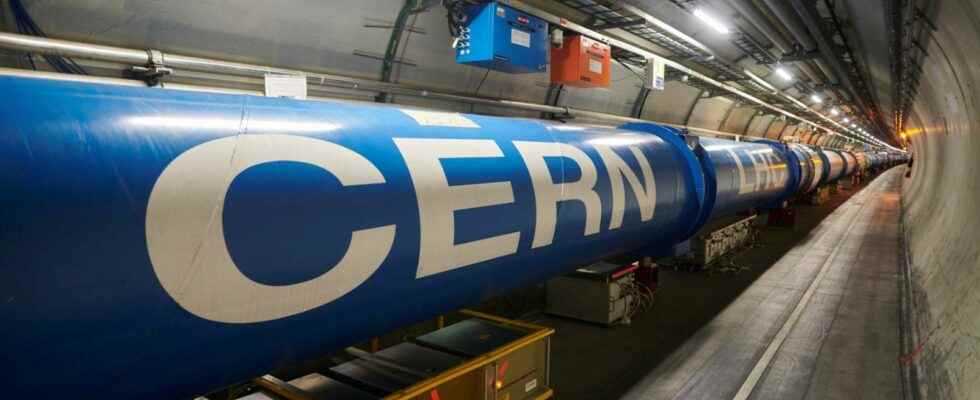The Large Hadron Collider, the LHC, is once again circulating protons in its 27 kilometer circumference ring. There are still tests and fine-tuning to be done, especially with the detectors, but in a few months the hunt for new particles and new physics that may help solve the puzzles of matter and dark energy will restart.
In a few months, we will be able to celebrate the 10th anniversary, on July 4, 2022, of the announcement of the discovery of boson of Brout-Englert-Higgs with the LHC, crowning the work more than 50 years ago of a handful of Nobel physical some of whom are now deceased, such as Steven Weinberg and Murray Gell Mannand others very much alive, like Francois Englert.
Admittedly, much more was expected of the LHC, such as the creation of black mini holes and particles of black matter. It hasn’t happened and all hope is not lost on that yet. More generally, new physics can still manifest itself there indirectly and this may already be the case with the last determination of the mass of the W boson, as physicists announced very recently..
The world’s largest and most powerful particle accelerator has restarted after a hiatus of more than three years for maintenance, consolidation and upgrades. On April 22, at 12:16 p.m., two proton beams circled the 27-kilometre ring of the Large Hadron Collider in opposite directions, at their injection energy of 450 billion electron volts (450 GeV). To obtain a fairly accurate French translation, click on the white rectangle at the bottom right. The English subtitles should then appear. Then click on the nut to the right of the rectangle, then on “Subtitles” and finally on “Translate automatically”. Choose “French”. © CERN
Protons at 450 GeV, but no collision yet
But for that, new collisions of protons are needed in the giant detectors along the 27 kilometer ring of the Large Hadron Collider. However, CERN has just announced that after a pause of several years devoted to work to improve the LHC accelerators and detectors, the circulation of proton beams had resumed, even if it is not yet question of taking new data to track new particles.
This just happened on April 22, at 12:16 p.m. CEST, with two proton beams that circulated in opposite directions along the ring, the injection energy already being 450 billion electronvolts (450 GeV ) per particle in these beams, which in theory makes it possible to create for example approximately 900 protons for each collision between two particles (the mass of a proton is about 1 GeV, according to the units expressing the relation ofEinstein between energy and mass).
A partial version of the previous video directly in French. © CERN 2022
” These beams traveled at injection energy and contained a relatively small number of protons. The high-intensity, high-energy collisions will occur in a few months, but these first beams mark a successful restart of the accelerator after the intense work carried out during the long shutdown commented on this event Rhodri Jones, Head of the Beams Department at CERN.
” Machinery and equipment underwent significant upgrades during CERN’s second long shutdown of the accelerator complex”, the LHC itself has undergone an extensive consolidation program and will now operate at even higher energy. Thanks to major improvements to the injector complex, it will provide much more data to upgraded LHC experiments “, explains, meanwhile, in a press release from Cern Mike Lamont, director of accelerators and technology of the European laboratory.
For the record, a presentation of CERN. © CERN
Interested in what you just read?
